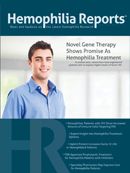Best Practices for Hepatitis C Screening
An estimated 3.3% of people in the United States born between 1945 and 1965 have chronic hepatitis C infection. The increased risk of infection in this population has recently led the Centers for Disease Control and Prevention (CDC) to recommend one-time hepatitis C virus (HCV) testing for all persons in this age cohort.

An estimated 3.3% of people in the United States born between 1945 and 1965 have chronic hepatitis C infection. The increased risk of infection in this population has recently led the Centers for Disease Control and Prevention (CDC) to recommend one-time hepatitis C virus (HCV) testing for all persons in this age cohort.1 Primary care providers are optimally positioned to facilitate these screening recommendations.
Table 1. Estimated Health Impact of Testing the 1945 to 1965 Birth Cohort for Hepatitis C Virus7
Birth Cohort Testing With Therapy
Outcome
Peginterferon alfa/
ribavirin
Peginterferon alfa/ribavirin
with telaprevir
Additional identified
cases
809,000
809,000
Cirrhosis cases averted
138,000
203,000
Decompensated cirrhosis
cases averted
50,000
74,000
Transplants averted
11,000
15,000
Deaths from HCV averted
82,000
121,000
Medical costs averted
$1.5 billion
$2.5 billion
Cost per QALY gained
$15,700
$35,000
HCV indicates hepatitis C virus; QALY, quality-adjusted life-year. Adapted from Rein DB et al.12
Despite the availability of effective treatments to eradicate HCV infection, most people with HCV do not know they are infected and therefore do not receive evaluation for treatment and ongoing care. Testing for HCV is the initial step toward improving health outcomes for persons infected with the virus.1-3
Since 1998, the CDC has recommended screening for HCV based on risk factors, including a history of intravenous drug use, receipt of blood or tissue before 1992, receipt of clotting factors before 1987, history of chronic dialysis, evidence of liver disease, or presence of human immunodeficiency virus (HIV) infection. However, risk-based testing strategies have had only limited success, as evidenced by the large proportion of HCV-infected persons who remain unaware of their infection status. Barriers to testing include limited access to health care and inadequate health insurance coverage; however, even in patients with adequate health insurance, risk-based testing practices have not been successful in identifying most HCV-infected persons.4,5 In addition, misconceptions regarding HCV transmission may lead patients to believe they are not at risk for acquiring the virus. “The real problem with hepatitis C is that people assume that to catch the virus you have to be injecting drugs throughout your life—that is simply not true,” said Graham R. Foster, professor of hepatology at Queen Mary, University of London, UK.
A survey conducted as part of the ongoing Chronic Hepatitis Cohort Study6 attempted to improve understanding of where and why persons with chronic HCV infection sought their initial testing. Data from 2006 through 2010 were analyzed for 4689 patients with HCV infection who responded to the survey. Approximately 60% of respondents reported that their initial HCV test occurred in a physician’s office. Risk-based indications (eg, intravenous drug use, hemodialysis) were reported as the reasons by 1045 (22.3%) respondents. Clinical indications reason. Thus, a large proportion of patients were not tested until they became symptomatic. Promoting CDC recommendations and identifying strategies to help physicians implement HCV testing in their offices may result in more timely identification of HCV and potential reductions in HCV-related morbidity and mortality.6
Table 17 presents the estimated health impact of testing all persons born in the cohort between 1945 and 1965 for HCV. This model was initially developed to include only treatment with interferon/ribavirin but was modified to include the direct-acting antiviral (DAA) telaprevir. It is estimated that full implementation of this screening strategy would identify 809,000 additional cases of HCV infection, and that treatment of these cases could avoid 203,000 cases of cirrhosis, 74,000 cases of decompensated cirrhosis, 47% of cases of hepatocellular carcinoma, 15,000 liver transplants, and 121,000 deaths. This translates to a total of $2.5 billion averted in medical costs. Costs per quality-adjusted life-year gained are estimated to be $15,700 with interferon/ribavirin treatment and $35,700 with a treatment protocol, including telaprevir.8
Based on these numbers, the CDC has made the following recommendations9:
- Recommendation 1: Adults born between 1945 and 1965 should receive one-time testing for HCV without prior ascertainment of HCV risk. (Grade: strong recommendation; moderate-quality evidence.)
- Recommendation 2: All persons identified with HCV infection should receive a brief alcohol screening and intervention as clinically indicated, followed by referral to appropriate care and treatment services for HCV infection and related conditions as indicated. (Grade: strong recommendation; moderate-quality evidence.)
References:
1. Centers for Disease Control and Prevention.http://www. cdc.gov/mmwr/preview/mmwrhtml/rr6104a1.htm. Accessed March 4, 2014.
2. Armstrong GL, Wasley A, Simard EP, et al. The prevalence of hepatitis C virus infection in the United States, 1999 through 2002. Ann Intern Med. 2006;144(10):7005-7014.
3. Naggie S. Management of hepatitis C virus infection: the basics. Top Antivir Med. 2012;20(5):154-161.
4. Spradling P, Rup L, Moorman AC, et al. Hepatitis B and C virus infection among 1.2 million persons with access to care: factors associated with testing and infection prevalence. Clin Infect Dis. 2012;55(8):1047-1055.
5. Volk ML, Tocco R, Saini S, Lok AS. Public health impact of antiviral therapy for hepatitis C in the United States. Hepatology. 2009;50:1750-1755.
6. Moorman AC, Gordon SC, Rupp LB, et al. Baseline characteristics and mortality among people in care for chronic viral hepatitis: the Chronic Hepatitis Cohort Study. Clin Infect Dis. 2013;56:40-50.
7. Ward JW. The hidden epidemic of hepatitis C virus infection in the United States: occult transmission and burden of disease. Top Antivir Med. 2013;21(1):15-19.
8. Rein DB, Smith BD, Wittenborn, JS, et al. The cost-effectiveness of birth-cohort screening for hepatitis c antibody in U.S primary care settings. Ann Intern Med. 2012. 156(4): 263-270.
9. Smith BD, Morgan RL, Beckett GA, et al. Recommendations for the identification of chronic hepatitis C virus infection among persons born during 1945-1965. MMWR Recomm Rep. 2012;61(RR-4):1-32.
